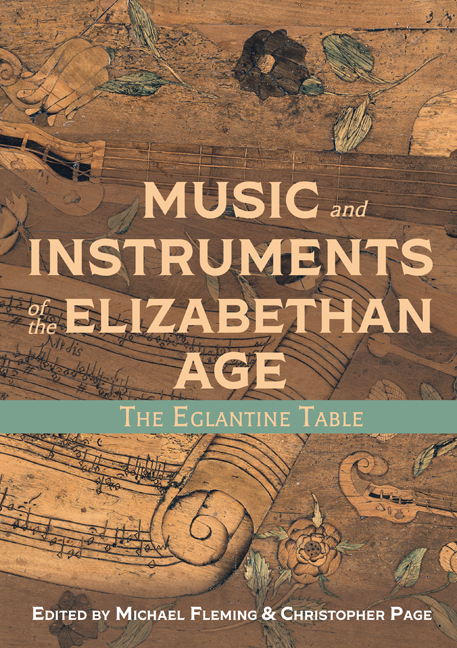Book contents
- Frontmatter
- Dedication
- Contents
- List of Illustrations
- Foreword
- Acknowledgements
- Note to the Reader
- List of Abbreviations
- Introducing the Eglantine Table
- Part I Silent Things
- Part II Music and Instruments
- Part III Broader Views of the Eglantine Table
- Appendices
- Glossary
- Bibliography
- List of Contributors
- Index
- Plate section
1 - The Table: Models and Artistic Context
Published online by Cambridge University Press: 24 March 2021
- Frontmatter
- Dedication
- Contents
- List of Illustrations
- Foreword
- Acknowledgements
- Note to the Reader
- List of Abbreviations
- Introducing the Eglantine Table
- Part I Silent Things
- Part II Music and Instruments
- Part III Broader Views of the Eglantine Table
- Appendices
- Glossary
- Bibliography
- List of Contributors
- Index
- Plate section
Summary
The Eglantine Table is the most spectacular of a small group of tables made by very skilled craftsmen, almost certainly operating in a workshop in one of those districts of London populated by religious refugees from the Netherlands. Their greatest concentration was in Southwark, but there were others in and around Smithfield and in Westminster. What distinguishes this set of tables is their sophisticated classical form – they are almost miniature pieces of architecture – and their decoration, which combines the technique of pictorial inlay with very un-English ornament. Indeed, the Eglantine Table marks with some accuracy – even anticipates – the moment at which England's relationship with Europe and continental art changed dramatically. The reasons will become clearer in due course.
The eye-catching decorative technique of inlaying veneers of different coloured woods, sometimes dyed or stained, with or without ivory, bone or mother-of-pearl, into wooden objects or panels originated in Arab countries. From there, the technique spread into Spain and Italy, where it was known as ‘intarsia’. The technique reached the pinnacle of perfection in the late fifteenth century in the studioli at Urbino and Gubbio where, perhaps significantly, musical instruments viewed as shapely, highly crafted and fragile objects appear. Within fifty years, such techniques had migrated to France and Germany. Simon Swynfen Jervis, whose account of the Eglantine Table is the fullest until now, cites the example of Fra Damiano da Bergamo, who, between 1547 and 1549, made a spectacular set of choir stalls with intarsia panels for Claude d’Urfé, French ambassador to the Council of Trent, at La Bastie d’Urfé near Saint-Etienne; in 1576, by contrast, Henri III appointed a German named Hans Craux as ‘marquetier du roi’. In Sweden, a series of spectacular interiors were constructed at Kalmar Castle, including the Gamla Kungsmaket (Old King's Chamber), which was fitted up between 1555 and 1562 with wainscoting consisting of paired Corinthian columns enclosing panels with heavy Germanic strapwork cartouches. These designs were inlaid by German craftsmen – the most prominent of whom were Urban Schultz and Marcus Ulfram – for the son of King Gustav Vasa, Duke Erik, later King Erik XIV (r. 1560–9), who had entered into unsuccessful marriage negotiations with Queen Elizabeth I and Mary Queen of Scots.
- Type
- Chapter
- Information
- Music and Instruments of the Elizabethan AgeThe Eglantine Table, pp. 21 - 34Publisher: Boydell & BrewerPrint publication year: 2021



